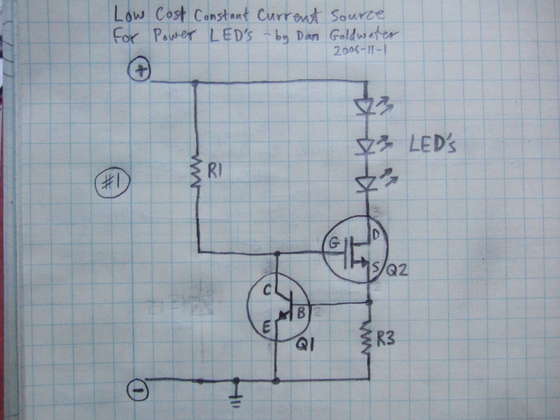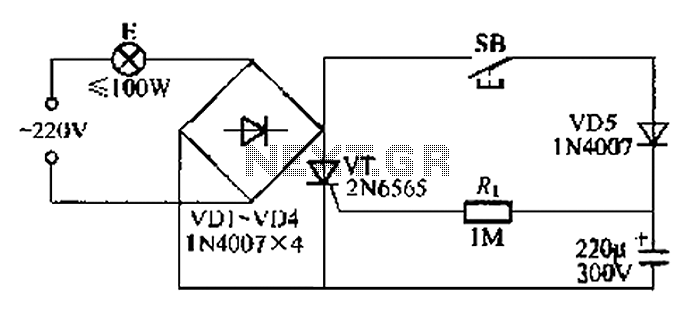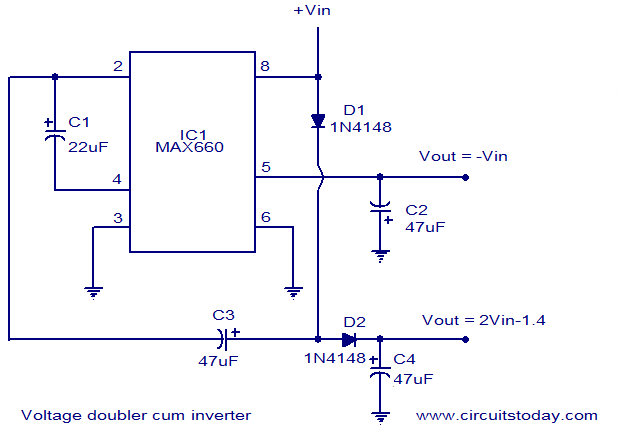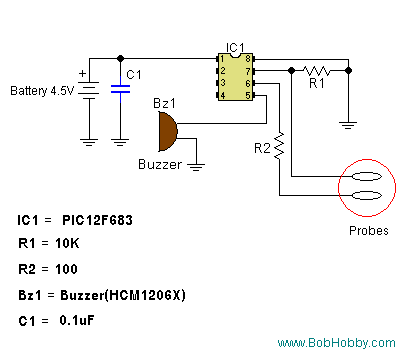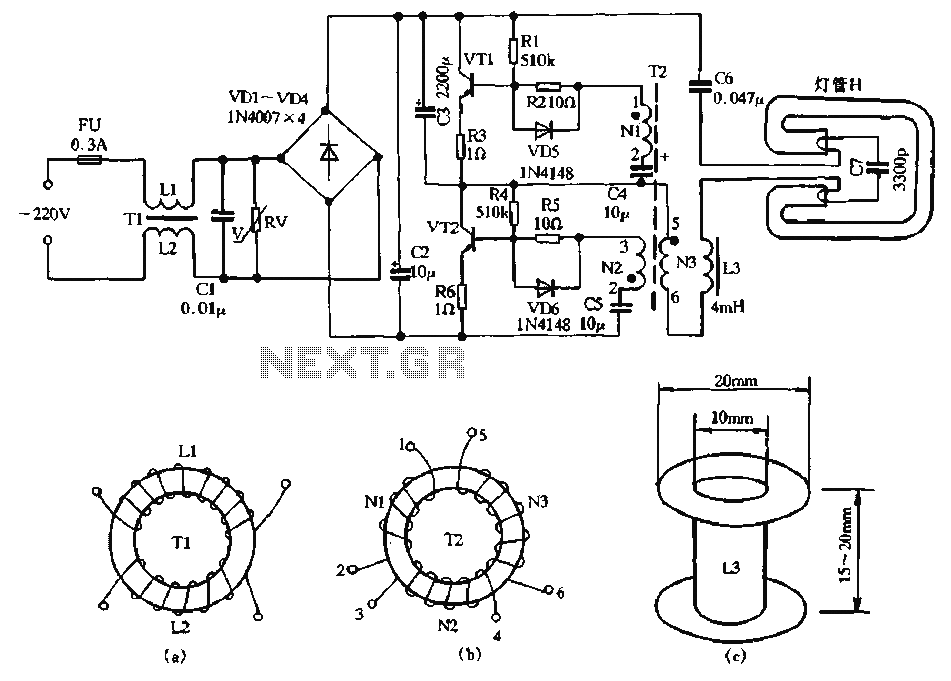
Xbee Wireless Interface Circuit
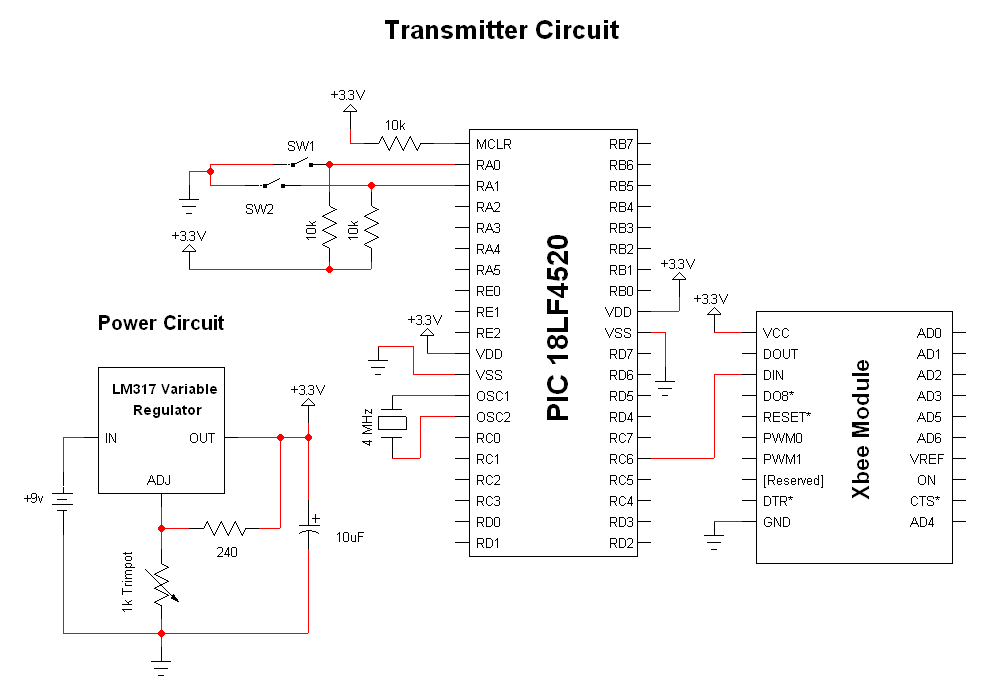
The advantage of these compact Xbee modules is that they handle most of the complex tasks. The transmitter and receiver circuits are both straightforward. The primary components in the circuit include the Xbee Modules, PIC 18LF452, and LM317. Both circuits utilize a simple power regulation circuit with the LM317 for +3.3V regulation. An output capacitor of 10µF is employed for noise filtering, ensuring that the output DC signal remains stable around +3.3V. A 1k or 5k trimmer is paired with a 240-ohm resistor to achieve the adjustable voltage necessary for +3.3V. The transmitter circuit features the standard connections for the PIC 18LF4520, including power, ground, MCLR, and crystal connections. Additionally, two buttons are connected to PORTA pins 0 and 1, with a 10kΩ pull-up resistor ensuring that the digital input registers as +5V or logic 1. When either button is pressed, the input is grounded, resulting in a logic 0. PortB pin 0 connects to the Xbee Din pin, facilitating the wireless data transmission to the receiver. The receiver circuit shares the same standard PIC connections but replaces the buttons with an LED for output. Similarly, PORTB pin 0 is linked to the Dout pin of the Xbee module to receive the wirelessly transmitted information.
The Xbee modules serve as the primary communication interface, enabling wireless data transmission between the transmitter and receiver circuits. The PIC 18LF452 microcontroller, known for its versatility, is used in both circuits to manage operations and data processing. The LM317 voltage regulator ensures that both circuits operate within the specified voltage range, providing a stable +3.3V output necessary for reliable performance. The choice of a 10µF capacitor for noise filtering is critical, as it helps mitigate voltage fluctuations and maintains a stable power supply to the microcontroller and Xbee modules.
In the transmitter circuit, the integration of two buttons allows for user input, which is essential for initiating data transmission. The use of a pull-up resistor ensures that the microcontroller can accurately detect button presses, translating them into digital signals that can be wirelessly transmitted. The connection of PortB pin 0 to the Xbee Din pin is crucial for sending data to the receiver, highlighting the importance of proper pin assignments in microcontroller interfacing.
Conversely, the receiver circuit is designed to output received data through an LED, providing a visual indication of successful data reception. The connection of PortB pin 0 to the Xbee Dout pin allows the microcontroller to read the incoming data stream, which can then be processed or displayed as needed. This setup exemplifies a simple yet effective wireless communication system, leveraging the capabilities of the Xbee modules and the PIC microcontroller to facilitate seamless data exchange in various applications.The great thing about these little Xbee modules is they take care of almost all the heavy lifting. As you can see below both the transmitter and the receiver circuits are drop-dead simple. The main devices used in the circuit are the Xbee Modules, PIC 18LF452 and LM317. Both circuits use the same simple power regulation circuit with the LM317 f or +3. 3v reg. An output capacitor of 10uF is used for noise filtering which helps keeps the output DC signal stable around +3. 3v. A 1k or 5k trimmer is used with a 240ohm resistor to create the adjustable voltage to the required +3.
3v The transmitter circuit has the standard PIC 18LF4520 power, ground, MCLR and crystal connections. In addition to the normal connections, two buttons are connected to PORTA pins 0 and 1. A pull up resistor of 10k © is used so that the digital input seen is +5v or logic 1. When either button is pressed, the input is connected to ground/+0v making the input a logic 0. PortB pin 0 is connected to the Xbee Din pin. This is for the wireless data to be output to the receiver. The receiver circuit has the same standard PIC power, ground, MCLR and crystal connections. The difference between the transmitter is instead of input via buttons, we are showing output with an LED.
Similarly, the PORTB pin 0 is connected to the Dout pin of the Xbee module so that the wirelessly transmitted information can be received. 🔗 External reference
The Xbee modules serve as the primary communication interface, enabling wireless data transmission between the transmitter and receiver circuits. The PIC 18LF452 microcontroller, known for its versatility, is used in both circuits to manage operations and data processing. The LM317 voltage regulator ensures that both circuits operate within the specified voltage range, providing a stable +3.3V output necessary for reliable performance. The choice of a 10µF capacitor for noise filtering is critical, as it helps mitigate voltage fluctuations and maintains a stable power supply to the microcontroller and Xbee modules.
In the transmitter circuit, the integration of two buttons allows for user input, which is essential for initiating data transmission. The use of a pull-up resistor ensures that the microcontroller can accurately detect button presses, translating them into digital signals that can be wirelessly transmitted. The connection of PortB pin 0 to the Xbee Din pin is crucial for sending data to the receiver, highlighting the importance of proper pin assignments in microcontroller interfacing.
Conversely, the receiver circuit is designed to output received data through an LED, providing a visual indication of successful data reception. The connection of PortB pin 0 to the Xbee Dout pin allows the microcontroller to read the incoming data stream, which can then be processed or displayed as needed. This setup exemplifies a simple yet effective wireless communication system, leveraging the capabilities of the Xbee modules and the PIC microcontroller to facilitate seamless data exchange in various applications.The great thing about these little Xbee modules is they take care of almost all the heavy lifting. As you can see below both the transmitter and the receiver circuits are drop-dead simple. The main devices used in the circuit are the Xbee Modules, PIC 18LF452 and LM317. Both circuits use the same simple power regulation circuit with the LM317 f or +3. 3v reg. An output capacitor of 10uF is used for noise filtering which helps keeps the output DC signal stable around +3. 3v. A 1k or 5k trimmer is used with a 240ohm resistor to create the adjustable voltage to the required +3.
3v The transmitter circuit has the standard PIC 18LF4520 power, ground, MCLR and crystal connections. In addition to the normal connections, two buttons are connected to PORTA pins 0 and 1. A pull up resistor of 10k © is used so that the digital input seen is +5v or logic 1. When either button is pressed, the input is connected to ground/+0v making the input a logic 0. PortB pin 0 is connected to the Xbee Din pin. This is for the wireless data to be output to the receiver. The receiver circuit has the same standard PIC power, ground, MCLR and crystal connections. The difference between the transmitter is instead of input via buttons, we are showing output with an LED.
Similarly, the PORTB pin 0 is connected to the Dout pin of the Xbee module so that the wirelessly transmitted information can be received. 🔗 External reference
